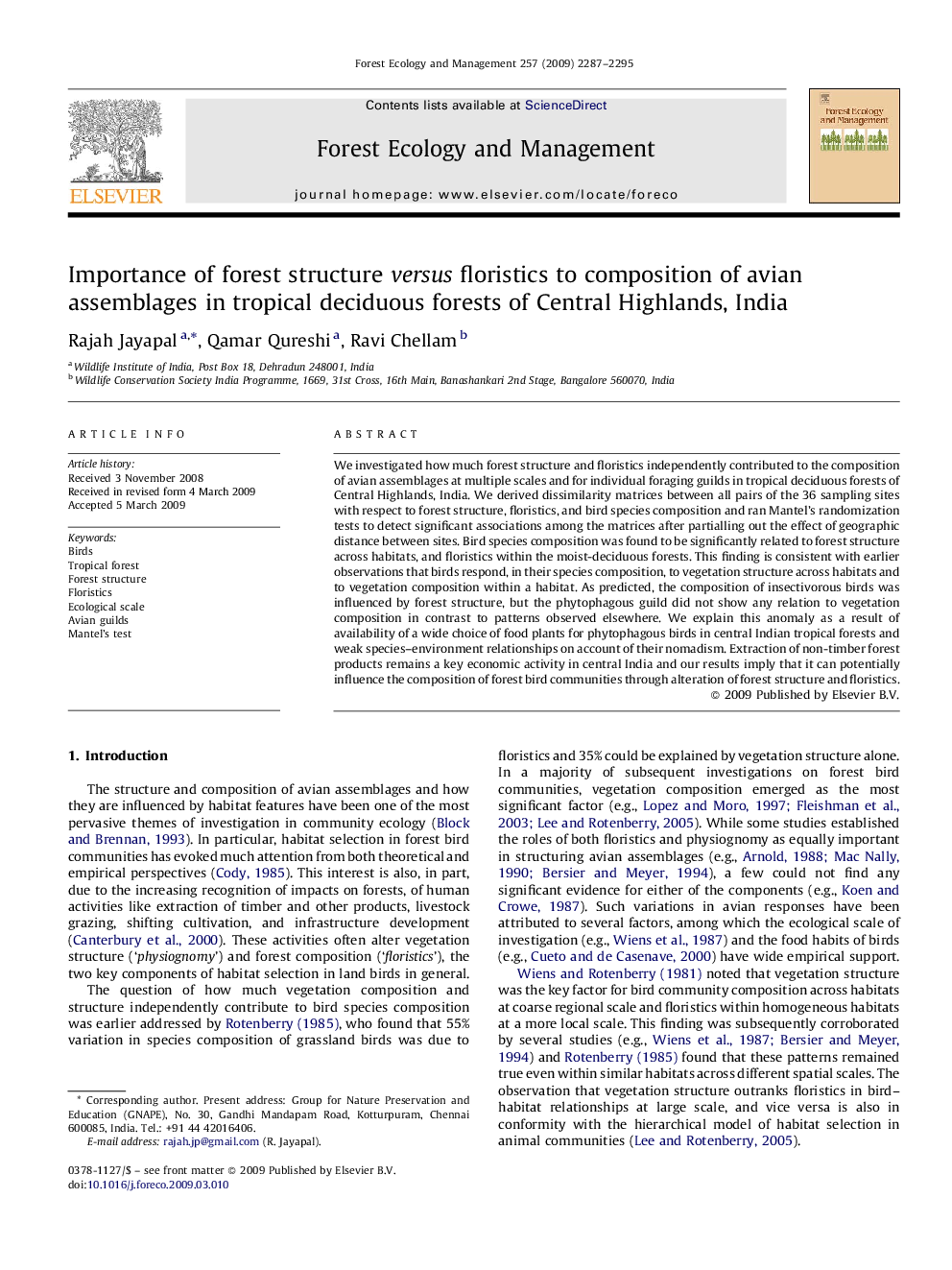| Article ID | Journal | Published Year | Pages | File Type |
|---|---|---|---|---|
| 88675 | Forest Ecology and Management | 2009 | 9 Pages |
We investigated how much forest structure and floristics independently contributed to the composition of avian assemblages at multiple scales and for individual foraging guilds in tropical deciduous forests of Central Highlands, India. We derived dissimilarity matrices between all pairs of the 36 sampling sites with respect to forest structure, floristics, and bird species composition and ran Mantel's randomization tests to detect significant associations among the matrices after partialling out the effect of geographic distance between sites. Bird species composition was found to be significantly related to forest structure across habitats, and floristics within the moist-deciduous forests. This finding is consistent with earlier observations that birds respond, in their species composition, to vegetation structure across habitats and to vegetation composition within a habitat. As predicted, the composition of insectivorous birds was influenced by forest structure, but the phytophagous guild did not show any relation to vegetation composition in contrast to patterns observed elsewhere. We explain this anomaly as a result of availability of a wide choice of food plants for phytophagous birds in central Indian tropical forests and weak species–environment relationships on account of their nomadism. Extraction of non-timber forest products remains a key economic activity in central India and our results imply that it can potentially influence the composition of forest bird communities through alteration of forest structure and floristics.
